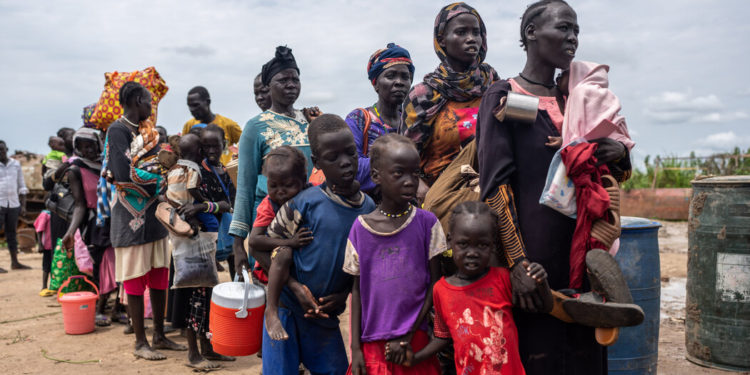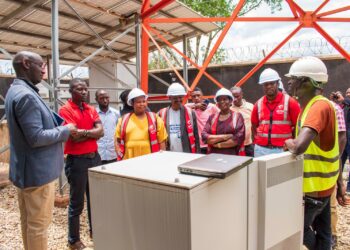By THE NEW YORK TIMES
Bombs that struck houses, markets and bus stations across Sudan, often killing dozens of civilians at once. Ethnic rampages, accompanied by rape and looting, that killed thousands in the western region of Darfur.
And a video clip, verified by United Nations officials, that shows Sudanese soldiers parading through the streets of a major city, triumphantly brandishing the decapitated heads of students who were killed on the basis of their ethnicity.
The horrors of Sudan’s spiraling civil war are laid out in graphic detail in a new United Nations report that draws on satellite imagery, photos, videos and interviews with over 300 victims and witnesses, to present the stark human toll from 10 months of fighting.
Many probable war crimes have occurred as part of the grinding battle for control of Sudan, one of the largest countries in Africa, which started with clashes between the country’s military and the paramilitary Rapid Support Forces in April 2023, the report by the U.N.’s human rights body found.
The fight started as a power struggle between the leaders of the military, which dominated Sudan for decades, and the R.S.F., which comes mainly from Darfur. But it quickly escalated into a nationwide conflict with catastrophic consequences for Sudan’s 46 million people.
Both sides have committed indiscriminate attacks on civilians. Women and children have been raped or gang raped. Recruitment of child soldiers is common.
Foreign powers, including the United Arab Emirates and Iran, have stepped in to back one side or the other, sending sophisticated weapons, including armed drones, to the battlefield, which accelerated the tempo of fighting and increased the already high risks to civilians. American- and Saudi-led diplomatic efforts to broker even a modest cease-fire have come to nothing.
And the brutality has become more open. The students who were decapitated in the city of El-Obeid, in central Sudan, were apparently butchered on the assumption that they backed the Rapid Support Forces, a Nairobi-based spokesman for the U. N. human rights office, Seif Manango, told reporters.
Sudan’s military said that it was investigating the video, denouncing its content as “shocking,” and promising to bring any perpetrators to account.
Despite the growing evidence of atrocities — and warnings from aid groups that parts of Sudan are heading toward famine — the international focus on conflicts in Gaza and Ukraine has largely eclipsed the crisis in Sudan.
A United Nations appeal for $2.7 billion in humanitarian funding for Sudan has yielded less than 4 percent of those funds — $97 million — forcing the U.N. to dig into its emergency reserve to meet the most urgent food and shelter needs.
Sudan’s war has forced eight million people from their homes, creating one of the world’s largest displacement crises. Nearly 1.5 million refugees have fled into neighboring countries, especially South Sudan, Chad and Egypt. About 80 percent of hospitals in conflict-affected areas have closed, the World Health Organization said.
Yet even as the weak die of starvation, attacks on aid convoys have obstructed aid deliveries, and impunity reigns. Despite accounts of “death, suffering and despair” since the war in Sudan began, there is “no end in sight” to the abuses of civilians, the U.N. human rights chief, Volker Turk, said in a statement.
The U.N. report found that both sides have detained civilians, including women and children, often torturing those they suspected of collaborating with their enemies. But it said the great majority of sexual assaults appeared to have been carried out by the Rapid Support Forces and affiliated militias, and cited one incident in which a victim was detained and gang raped over 35 days by R.S.F. forces.
The report said that other victims were killed trying to prevent the fighters from assaulting their family members, and that members of ethnic African groups were especially targeted by R.S.F.-linked fighters from ethnic Arab backgrounds.
At least 14,600 people have been killed in the conflict, according to the Armed Conflict Location & Event Data Project, a nonprofit that collects data about conflicts, although the actual toll is almost certainly much higher because of the difficulty of collecting data in a war zone. In a report submitted to the U.N. Security Council last month, obtained by The Times, U.N. investigators estimated that as many as 15,000 people were killed during just one assault by the R.S.F. and allied forces on the Darfuri city of Geneina in November.
In response to the R.S.F. advance, the Sudanese military has dropped crude barrel bombs on homes and camps in the Darfur and Kordofan regions, frequently killing dozens of civilians at once.
The evidence of widespread atrocities comes as the course of the war has taken several dramatic turns in recent months, amid growing evidence of foreign interference.
The Emirates have been covertly supplying the Rapid Support Forces with armed drones, surface-to-air missiles and other sophisticated weapons since last summer, according to United Nations investigators and diplomats, helping the Sudanese group capture a string of major cities in Darfur, as well as the key city of Wad Madani, south of Khartoum, in December.
Shock at the fall of Wad Madani prompted the Sudanese military to go back on the offensive, launching a major drive to recapture from the R.S.F. parts of Omdurman, a city across the Nile from Khartoum.
In that battle, the army has reclaimed some territory, one of its first major victories since the war started, although it has had to turn to Iran to obtain armed drones to boost its campaign — a potential source of tension with the military’s other backer, Egypt, whose military support appears to have waned in recent months.
The army effort in Omdurman was also boosted by the arrival of Darfuri rebel groups that once fought Sudan’s army but now are allied with the force in fighting against the R.S.F., their mutual enemy.
Space for peace talks appears to be shrinking. American- and Saudi-led efforts to broker even a modest cease-fire through talks in the Saudi city of Jeddah proved futile.
The American ambassador to Sudan, John Godfrey, who helped lead those talks, said on Friday that he was stepping down. No replacement has been announced amid reports that the State Department will soon name a special envoy for Sudan.
On Friday, a State Department spokesman condemned a decision by the Sudanese military to prohibit relief aid from crossing into R.S.F.-controlled territory from Chad, as well as the R.S.F. looting of aid deliveries and harassment of humanitarian workers.
The leader of the R.S.F., Lt. Gen. Mohamed Hamdan, appeared to be taking a victory lap in late December and early January, when he toured six African nations aboard an Emirati jet, shaking hands with powerful leaders, including South Africa’s President Cyril Ramaphosa and Kenya’s President William Ruto.
In recent weeks, representatives from the warring parties have held back-channel talks in the Persian Gulf state of Bahrain, with support from the Emirates and Egypt, according to diplomats and news reports. But those talks have yielded little so far.
In February a senior Sudanese general, Shams al-Din Kabbashi, suggested that peace efforts had reached an impasse.
While Sudan’s military “carries an olive branch next to the gun,” it would not engage in political talks until “the military file is closed,” he said in a speech. “We will fight, we will fight, we will fight.”







Discussion about this post